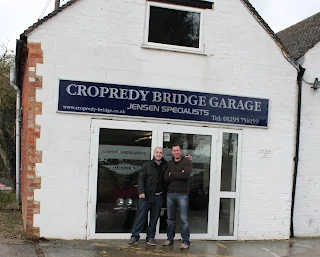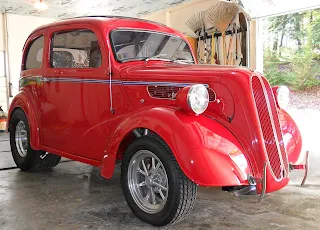Written by Bobby Bennett
Ray Allen’s SS/E Automatic 1970 Chevelle selling for over $1 Million dollars at the Barrett-Jackson auction sent a message loud and clear – old race cars have a
value. A similar 1972 Chevelle, also powered by a Truppi-Kling Competition engine, sold for $121,000, confirmed the statement.
Having an appraisal on your special car can be the difference in your special edition model raking in a fair market value and someone taking advantage of you or your estate.
Jon Lundberg, who made a name for decades as one of drag racing’s premiere live track announcers, is doing his part to ensure the classic cars get their just due on the auction block.
“An appraisal is a snap shot of value taken at a particular place in time,” explained Lundberg, who got into the auto appraisal business after buying Southwest Valuations from Don McReynolds.
Lundberg’s firm is plenty busy these days traveling to various parts of the country putting a price tag on rare vehicles.
“We have a specific pattern that we follow,” Lundberg explained. “We come to where the vehicle is, whether that’s a racing event where I can do a bunch of cars and save the racers having to have the traveling expense, or if it’s individual racing car – I do both. it happens as well. We show up, we take somewhere in the area of 100 digital photographs, and we ask before we come that the car owner complete for us two forms that we have developed to help us identify the particular vehicle; one is called 'Unique Attributes' and the other is called “Provenance.”
Both documents are exclusive and copyrighted through Lundberg’s company.
The Unique Attributes form follows the dictates of an art object identification program developed originally by the Getty Museum, and approximately 1,000 companies worldwide, to quantify and very carefully identify art objects which might be stolen or criminally duplicated. This form very painfully asks the owner, driver, crew chief or - whoever fills it out - to identify almost every operating facet of the vehicle and becomes part of the report.
The Provenance is a race car’s resume, a history of its accomplishments back to its build date
“If you have the front cover of HOT ROD Magazine, that’s a value-adder,” Lundberg added. “If you won a major national event or a significant independent event like the Super Stock Nationals or the Popular Hot Rodding Magazine Meet then that adds value as well because that means the car ran an open competition and was a winner. Those two elements are significant value-adders.”
With the Unique Attributes and Provenance forms filled out, and an in-person inspection, Lundberg returns to his office and begins the long and tedious chore of homework. For an unlicensed competition race vehicle – literally - these forms become its birth certificate.
“It proves that the vehicle existed, it operated and is known, and it has a physical identity and a fair market or actual cash value,” Lundberg said. “What we tell the owner to do for insurance, and estate planning purposes or IRS charitable donation purposes is to give one copy to the significant person for whom the appraisal is being done and put the second one in a safe deposit box along with the title to their house so that if anything happens at anytime to that vehicle you have a document that states those things clearly and in a quantified manner.”
This process can take anywhere from 30 to 90 days, depending on how much information is provided at the project onset of the process and when the actual inspection is conducted.
These 30 to 90 days can be crucial to your family with a rare and/or vintage relic sitting in your garage if you should unexpectedly pass away. In another scenario, he’s in the midst of completing an appraisal for the family of a race car owner suffering from Alzheimer’s.
“We find that in a predominate number of cases, second generation family members of a racer who dies aren’t really that much interested in the physical vehicle,” Lundberg admits. “What it allows for the remaining widow to do is to either, auction it off, charitably donate, or physically sell the vehicle hopefully understanding what its value is in a real world sense, because lacking this information - in all too many cases - somebody gets taken advantage of.”
How much does it cost to get a car appraised? According to Lundberg, those interested in retaining his firm, can visit his website at
www.autovaluz.com. You can either contact him via email or any of the phone numbers there; they have a nationwide toll-free number.
Once Lundberg’s firm is contacted they will do a 15 minute interview in which they determine what it will take to investigate and draw a value on the project. The potential client may then evaluate Lundberg’s process as each receives a Scope of Work Proposal containing all relevant details and fees.
“The most economical way for these kinds of things to be done if there is a considerable distance between our homes involved is for the individual car owner to join a collection of cars at a major event,” Lundberg explained. “We do four to six major events per year. We always state where we are going and when we are going to be there so that car owners who are interested in having this done can assemble themselves. What we do then of course is split the transportation costs among the clients.”
Finding the cars and getting to the point of actually inspecting the car isn’t the toughest part of Lundberg’s challenge. Believe it or not, the most complex task is in getting those two important and basic documents filled out.
“If you take two vehicles that are built exactly the same, had exactly the same power train, two different crews, one wins a significant number of national events and open competition drag races, and the other smokes the tires and is the leading oil leaker, which one of those do you think is going to be worth the most money?” Lundberg offers.
Even though getting those documents can sometimes be a headache, just embarking on the process can be rewarding for Lundberg, much like announcing on the microphone at a drag race has been for decades.
“My role as a color [commentator] is to give back to the sport that gave me so much satisfaction for 46 years,” Lundberg explained. “And now I have an opportunity as well to contribute to the safety and value retention of this marvelous group of restored and re-created vehicles that are coming to the sport.”
And that, Lundberg adds, is priceless, no matter the appraisal.
SOURCE
Southwest Valuations
783 West Clear Creek Way
Oro Valley, Arizona 85737-6954
1-877-427-7249.
http://www.southwest-valuations.com
#############################
Do you love Classic Cars like we love Classic Cars? Join us at
All About Detail
Did you catch our last News/Blog "
Exotic Automotive Armageddon" ?

























